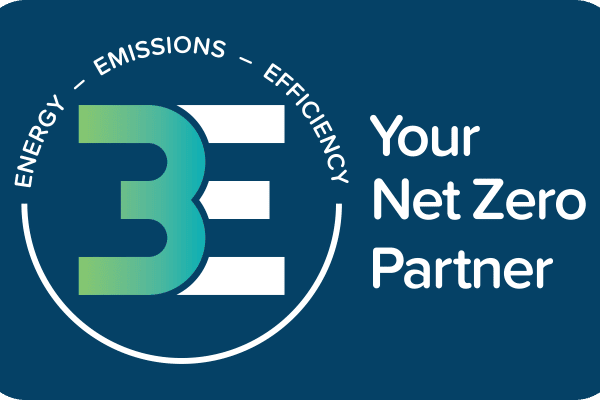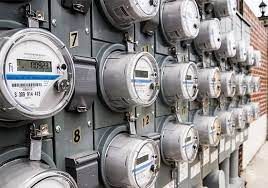A Year in Review and What’s in Store for the Sustainability Industry in 2022?
Despite the global pandemic, the energy efficiency and renewable generation industries showed their resilience to weather the storm. The disruptions caused by the pandemic still continues today, but the slight decrease in fossil fuel use has been beneficial. Investments in renewable energy production continue to increase which has led to some government and private organisations to revise and renew their sustainability goals.
As we approach the end of 2021, we take a moment to reflect on the year that was and highlight some of the key policy and funding initiatives and events that took place.
Here are some of the highlights for the year 2021:
Business Recovery Energy Efficiency Fund (BREEF) – The Victorian Government announced its $31 AUD million worth of grants to help businesses, who are using 40 MWh of electricity (megawatt hours) or 1 TJ (terajoule) of natural gas annually, recover from the economic effects of the pandemic and encourage these organisations to embrace sustainability and energy efficiency.
State Governments Spending a Billion Dollars to Fund Energy Efficiency – States such as NSW, VIC, and SA committed to spend at least a billion dollars to fund various energy efficiency initiatives and programs for the next four years. These programs are also aimed to generate new jobs in the renewable energy sector and help these states achieve their own net zero goals. The NSW Government announced a $4.8M initiative to boost the transition of non-residential buildings towards Net Zero emissions.
Entry of New Power Producers Helped Lower Energy Prices – Small Medium Enterprises (SMEs) and residential users enjoyed energy price drops in SA, QLD, ACT, NSW, and Tasmania. Dramatic changes in the energy supply chain will help lower energy prices in the next few years.
Victoria’s Business Competitiveness Program – The State of Victoria launched a program to help the manufacturing sector, both emerging and traditional, to expand their operations with the newest, energy efficient technologies to generate sustainable jobs for all Victorians. It’s part of the State’s energy efficiency initiative for sustainability.
Solar Victoria Rebates Program – Another sustainability initiative of the State of Victoria to help small businesses reduce their small-scale solar system’s installation upfront cost. It was also aimed to support smaller business organisations who plan to have a 30kW small-scale solar PV for their business.
The Australian Government’s $1.6 Billion Investment for Emissions Reduction – The Commonwealth announced its plans to spend $1.6 billion more to decrease the country’s emissions over the next decade. This will support the federal government’s aim to support activities which promote lower emissions and better energy productivity.
The IPCC Releases Report on the Rapid and Intensified Effects of Climate Change – The Intergovernmental Panel on Climate Change or IPCC, raises the alarm on the ill effects of climate change. In a report they released in August, it revealed that our inaction may lead to “irreversible effects over hundreds to thousands of years.”
Capital City Councils Sydney, Melbourne, and Brisbane Achieve Carbon Neutrality – According to the report published by ClimateWorks – Net Zero Momentum Tracker: Local Government Sector Report, Sydney, Melbourne, and Brisbane’s operational emissions are already carbon neutral, while the other city councils have set goals to be carbon neutral by 2030 and 2040 respectively. Local government councils’ actions against climate change will greatly benefits their respective communities and encourage citizens to do their part to save our environment.
NABERS: NABERS Ratings expansion into residential aged care and retirement living sectors; launch of NABERS Perform (new human-centered cloud platform for conducting NABERS ratings faster and more efficiently; release of the third NABERS Sustainable Portfolios Index (SPI) showcasing the proven environmental performance of the top 43 building portfolios and funds across the country; updated emissions factors used to calculated NABERS energy ratings for all buildings to account for renewable energy in the grid; and also announced the development of a renewable energy indicator designed to reward a building’s procurement of renewable energy.
The 26th Conference of Parties (COP26) and Australia’s Net Zero 2050 Commitment – Despite the pandemic, COP26 was held in Glasgow to address the current climate emergency. All countries agreed to roll out actions based on the 2015 Paris Agreement. Australia reaffirmed its Net Zero 2050 commitment and Australian PM Scott Morrison is determined to protect the “Australian way of life, especially in the rural and regional areas, as our way of life is unique.”
What’s In Store for the Industry in 2022?
Recovering post pandemic means focusing on decarbonisation (net zero emissions), become resilient to the effects of climate change, and switching to sustainable energy resources. Organisations, both government and businesses, must include sustainability in their net zero plans. Organisations with higher ESG (Environmental, Social, and Governance) ratings will fair better and outperform others, based on market average.
Here are the other trends to look out for in 2022:
- Data is King – Data will dominate due to its role in measuring the impact of an organisation’s sustainability efforts. It plays an important key to ensure that ESG projects are meeting their desired results.
- Business Transparency – In lieu of ESG reporting and government regulations on environmental data reporting, transparency is an important trend to look out for. Transparency will help all stakeholders see if sustainable efforts are being practiced, and to hold organisations responsible if they fail to meet their decarbonisation goals.
- Low-Energy and Smart Buildings – Changes in the National Construction Code (NCC) will lead to the rise of low-energy and smart buildings. One of the areas which will be address by the new construction code is air leakages and building sealings. An airtight construction is the pillar of an energy-efficient and smart building for the future.
- Dependency on Traditional Fuels will Decline – Australia’s dependency on gas and coal generation is declining as the uptick in renewables generation continues. Large-scale renewable energy targets were already exceeded, while solar PV distribution continues to grow.
- Continuous Growth of Renewable Energy Generation – This year, renewable energy generation grew by 8% and is expected to continue its growth trajectory in 2022.
These are just some of the trends to watch out for next year. While the effects of the pandemic are far-reaching, sustainability solutions and decarbonisation actions will continue to be areas of key focus for many organisations.
Realise your New Year Resolution (to decarbonise) by connecting with the Net Zero experts, and discuss your organisation’s energy efficiency plans, or call us 1300 55 77 64.





